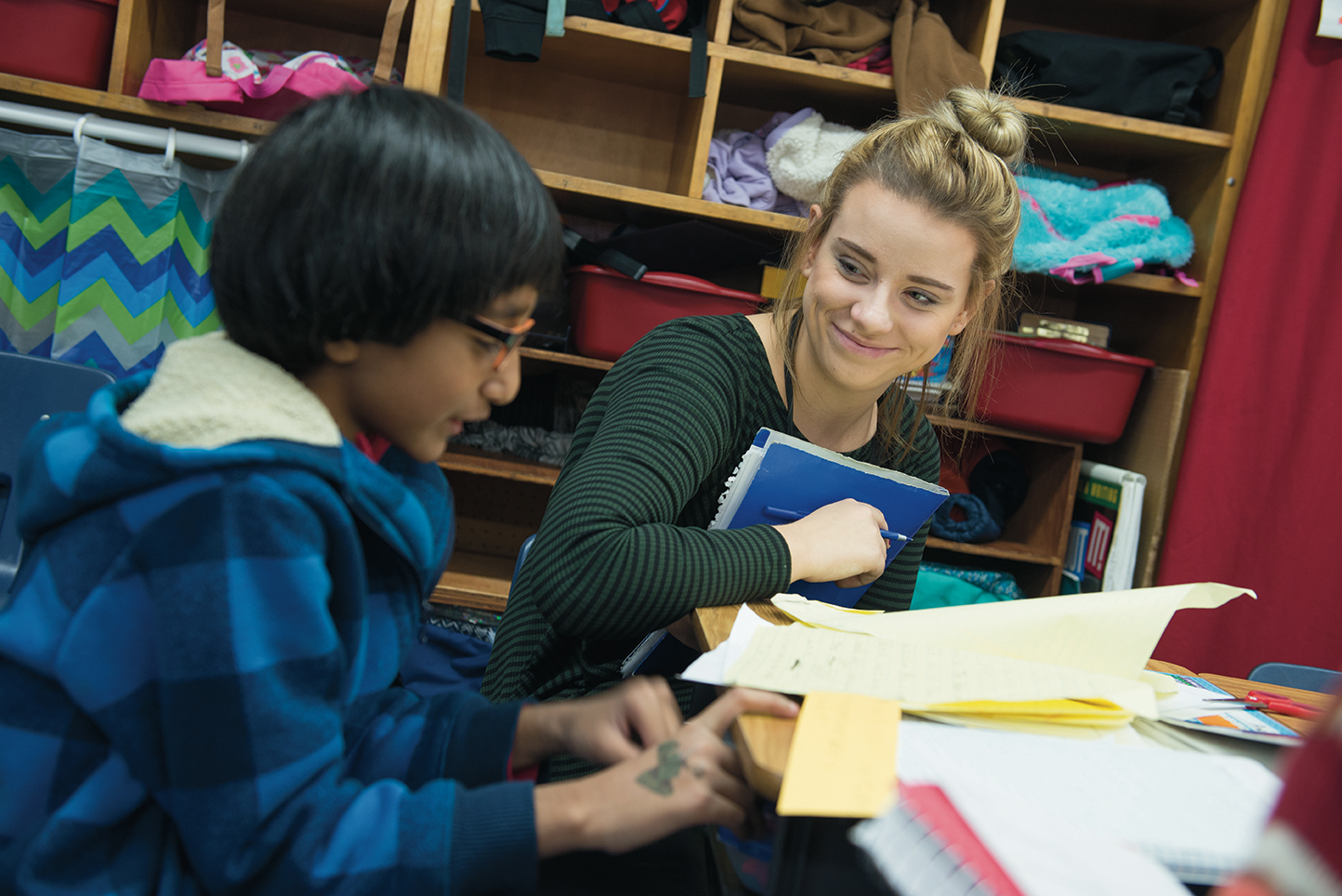Round-robin reading just does not work. A body of research has shown that having grade school students take turns reading from a book is an ineffective way to develop literacy. A much better method is to assign students the same pages to read silently, and then discuss what they read. So why do new teachers continue to use the former and not the latter practice? They revert to how they were taught in school when they face the real-world pressures of limited time and resources.
The theory and practice gap is well-documented, said Deborah MacPhee, a former literacy coach, who is now an associate professor in Illinois State University’s College of Education. MacPhee has designed a collaborative model of teacher education targeted at bridging the gap, in order to better prepare aspiring teachers and improve instructors already in the classroom. MacPhee is implementing her model in the Pekin Public Schools District—one of Illinois State’s Professional Development School (PDS) partners—through her three-hour Language Arts Instructional Strategies course.
“We learn from the (PDS) students and they learn from us, and in the end, the students win.”—Deborah MacPhee
Rather than lecture and hold discussion during class, MacPhee partners with Pekin teachers and administrators to teach Illinois State undergraduate students, in their role as PDS interns, in elementary classrooms. MacPhee developed an embedded course with shared instructional experiences, similar to a lab school environment. The interns, classroom teachers, and administrators explore literacy practices together, with the interns observing and teaching in host classrooms while Pekin faculty and MacPhee support the cycle of planning, instructing, and assessing. Immediately after each shared instructional experience, the participants gather to debrief and provide each other feedback, which informs future lessons.
Appears In“Because we believe learning is social and individuals construct knowledge through social engagement, we designed a model through which people of all different levels of knowledge and experience talk about learning and teaching together,” MacPhee said. “I also wanted to develop a model where my course was immersed in the school day so our interns were getting supported practice in authentic settings.”
Getting immediate feedback from classroom teachers during the in-depth debriefings moves the interns forward, and shifts the focus of their course from being about a grade, to becoming an effective teacher, MacPhee said. “We’re all just trying to get better at what we do. We create a safe space to ask questions and make decisions that are good for students, and we get to have those conversations in real time.”
A.J. Schroff, a Pekin elementary school principal, saw MacPhee’s model as a professional development opportunity for his staff as well. “It is very difficult to carve out time to dedicate to professional development with everything required of us and scheduling difficulties. We learn from the (PDS) students and they learn from us, and in the end, the students win.”
That is exactly what MacPhee wanted to happen. The model is meant to develop teachers in the school district as well and give them the opportunity to analyze what they are doing in the classroom.
First grade teacher Morgan Belcher ’06, M.S. ’11, who is MacPhee’s co-researcher and a doctoral student at Illinois State, said the ongoing development goes far beyond what a school district’s daylong institute can provide: “This is sustaining and really bridges the theory to the practice. After lessons are taught, there are debriefing conversations between teachers, interns, sometimes principals. It’s just great to have a conversation with multiple perspectives.”
MacPhee’s model is based in part on research she and a small group of educators from Pekin Public Schools conducted in 2015.

They examined the ways educators used language in debriefing conversations. The researchers identified six themes participants were using in debriefing conversations—praise, recognize, explain, make connections, suggest, ask questions—and several patterns, such as privileging praise over constructive feedback and focusing more on the pedagogy rather than content and student learning. These findings prompted changes in the weekly course focus and debriefing protocol for the fall 2016 iteration of the model.
MacPhee will continue to build on the model by improving the content and professional development pieces. She does not know of any other PDS school using this model but thinks it could be adapted to other PDS initiatives across the country.
The model took time to develop. She spent the first two years laying the foundation by building relationships with teachers and administrators. While she had a vision, she invited others to share theirs, helping her construct a model. “I wanted it to be a collaborative endeavor. I went back to the original intent of PDS, that it is a simultaneous renewal of K-12 and preservice teacher education.”
MacPhee joined Illinois State University’s faculty in 2011 from the University of South Carolina, where she earned her Ph.D. in language and literacy. What she has created is grounded in what she learned from her professional development and coaching research. Illinois State’s College of Education supports MacPhee’s research through a partnership grant, which paid for course texts for PDS faculty.
“I came here to do PDS work because Illinois State is known for it. The School of Teaching and Learning from day one has been very open to and excited about the work I’m doing.”
MacPhee and her co-researchers presented their model in November 2016 at the National Council for Teachers of English Annual Convention and preliminary research findings in December 2016 at the Literacy Research Association Annual Meeting. She will continue refining the course, with input from her district partners and through ongoing data collection and analysis, to merge theory and practice in teacher education.
“When I say collaboratively constructing the course, I do ask for teachers’ input on every part of the course,” she said. “I lead the way but I really do try to make sure teachers feel like they’re getting something too, that we’re all growing and developing.”
Kate Arthur can be reached at kaarthu@IllinoisState.edu.

